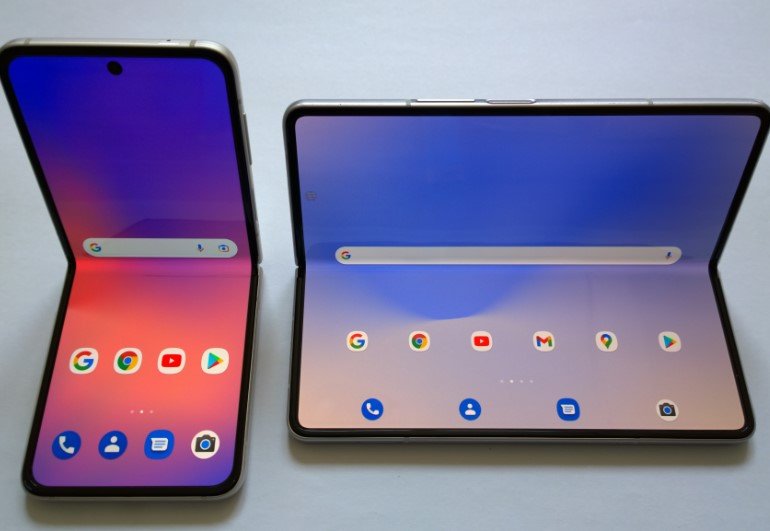Galaxy Devices Get Smarter About Staying Safe as Theft Rates Surge
Samsung is going on the offensive against smartphone thieves. In its latest One UI 7 update, the tech giant is pushing out a robust set of anti-theft features designed to keep your Galaxy phone—and everything on it—out of the wrong hands.
Starting June 30, the update is rolling out across eligible devices, offering a layered defense system that blends artificial intelligence with intuitive user controls. These new tools arrive as global smartphone thefts, particularly in crowded cities and transit systems, show no signs of slowing down.
Phones That Know When They’re Stolen
Perhaps the flashiest part of the new update is what Samsung calls Theft Detection Lock. It’s not just marketing jargon. The system actually uses motion sensors and AI to recognize snatching patterns—think of a phone being yanked from someone’s hand—and instantly locks the device. No passcode? No access.
This feature works even when the phone isn’t connected to a network. Offline Device Lock, built into Android but customized by Samsung, steps in after multiple failed login attempts and disables the screen until further authentication is provided.
One sentence for natural pacing.
The tech here isn’t just reactive—it’s proactive. And it’s aimed squarely at pickpockets and phone lifters who count on seconds of confusion to slip away with your digital life.

Remote Lock and Identity Checks Offer Backup Controls
For those moments when you can’t physically stop a theft but know your phone’s compromised, Samsung’s Remote Lock might be your new favorite tool. Here’s how it works: You verify your identity using your phone number on another device, and boom—your stolen Galaxy phone gets locked remotely.
It’s clean. It’s fast. And, more importantly, it doesn’t require logging into complicated accounts or waiting on hold with support.
Things get even tighter with Identity Check. If your phone ends up in an unfamiliar place—like a city you’ve never visited or a sketchy Wi-Fi zone—the system starts demanding biometric authentication for sensitive changes, such as logging out of accounts or turning off tracking.
You can set up “Safe Places” like your home or office where these extra checks don’t apply.
Here’s a quick snapshot of what Samsung’s new anti-theft controls include:
-
Theft Detection Lock: AI detects motion patterns and instantly locks the phone
-
Offline Device Lock: Triggers on failed logins, works without internet
-
Remote Lock: Lets you secure your phone via phone number verification
-
Identity Check: Requires biometrics in unfamiliar locations
-
Safe Places: Customize zones where extra authentication isn’t needed
Security Delay Is a Sneaky Smart Move
There’s a particularly clever feature baked into the One UI 7 update called Security Delay. Basically, if someone tries to reset your biometrics—say, replacing your fingerprint or face ID—the phone imposes a one-hour delay before allowing the change.
One hour might not sound like much. But in security terms, it’s gold.
That pause gives owners time to remotely lock or locate their phone before thieves can gain deeper access. It’s a small window of control, but it could be the difference between keeping your photos, bank apps, and private data safe—or losing everything.
And let’s be real, a thief isn’t going to stand around with a locked phone for an hour hoping it magically opens.
The feature is eerily similar to Apple’s Stolen Device Protection, introduced earlier this year, which applies delays and restrictions on certain actions in vulnerable situations. Samsung clearly took notes—and arguably went a step further by integrating motion-based AI into the mix.
UK Market and Android 10 Support Make It a Wide Rollout
Samsung isn’t playing favorites with this one. These new features aren’t just for the flagship Galaxy S series. Any Galaxy device running Android 10 or higher can access most of the new security tools.
The UK has been a particularly hot target for these updates. With more than 40 million Galaxy users in the country, Samsung made sure this region got the full security suite, building on a recent wave of major critical updates.
Samsung officials confirmed that the rollout will be staggered but swift, especially across key urban markets like London, Mumbai, New York, and Seoul—places where mobile theft is a known issue.
One sentence to keep rhythm.
And yes, that includes support for Samsung’s older devices too, as long as they meet the Android 10 minimum requirement.
Here’s a look at the eligible devices and markets receiving updates in the next 30 days:
| Device Series | Eligible Models (Android 10+) | Prioritized Markets |
|---|---|---|
| Galaxy S Series | S10 and newer | UK, US, India, South Korea |
| Galaxy Note Series | Note 10 and newer | Germany, UAE, Singapore |
| Galaxy A Series | A51, A71, A72, A54 | Brazil, Philippines, France |
| Galaxy Fold Series | Fold, Z Fold 2, 3, 4, 5 | Japan, UK, Australia |
How to Turn It All On (Without Getting Lost in Settings)
Now, for the part most people dread—finding the right place in the settings menu. Thankfully, Samsung’s made the process a bit smoother.
You’ll want to head into Settings, then look for Security and Privacy. From there, scroll down to Lost Device Protection and tap into Theft Protection. It’s not buried too deep, but it’s still worth knowing the full path.
There’s no toggle labeled “Ultimate Theft Shield,” no dramatic red warning flags. Just clear labels, solid options, and tools that work together behind the scenes.
All of the features are optional and customizable. You can turn individual tools on or off depending on what you’re comfortable with. But using them together? That’s when it becomes a real fortress.
One sentence to breathe.
And let’s be honest, even if you’ve never had your phone stolen, these tools are comforting to have—kind of like locking your front door even when you’re sure no one’s coming in.
